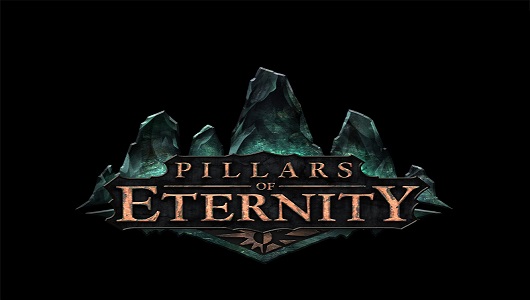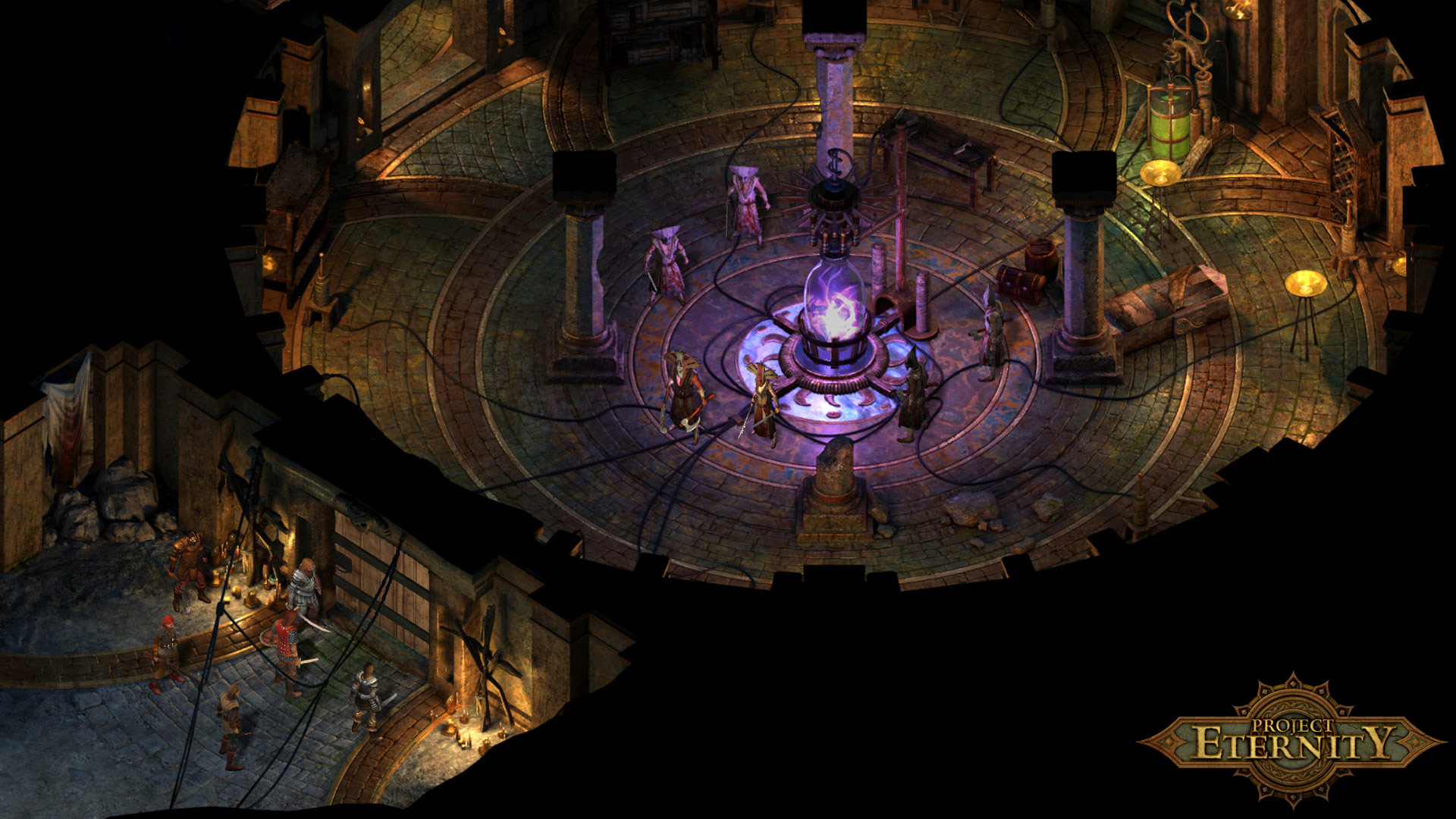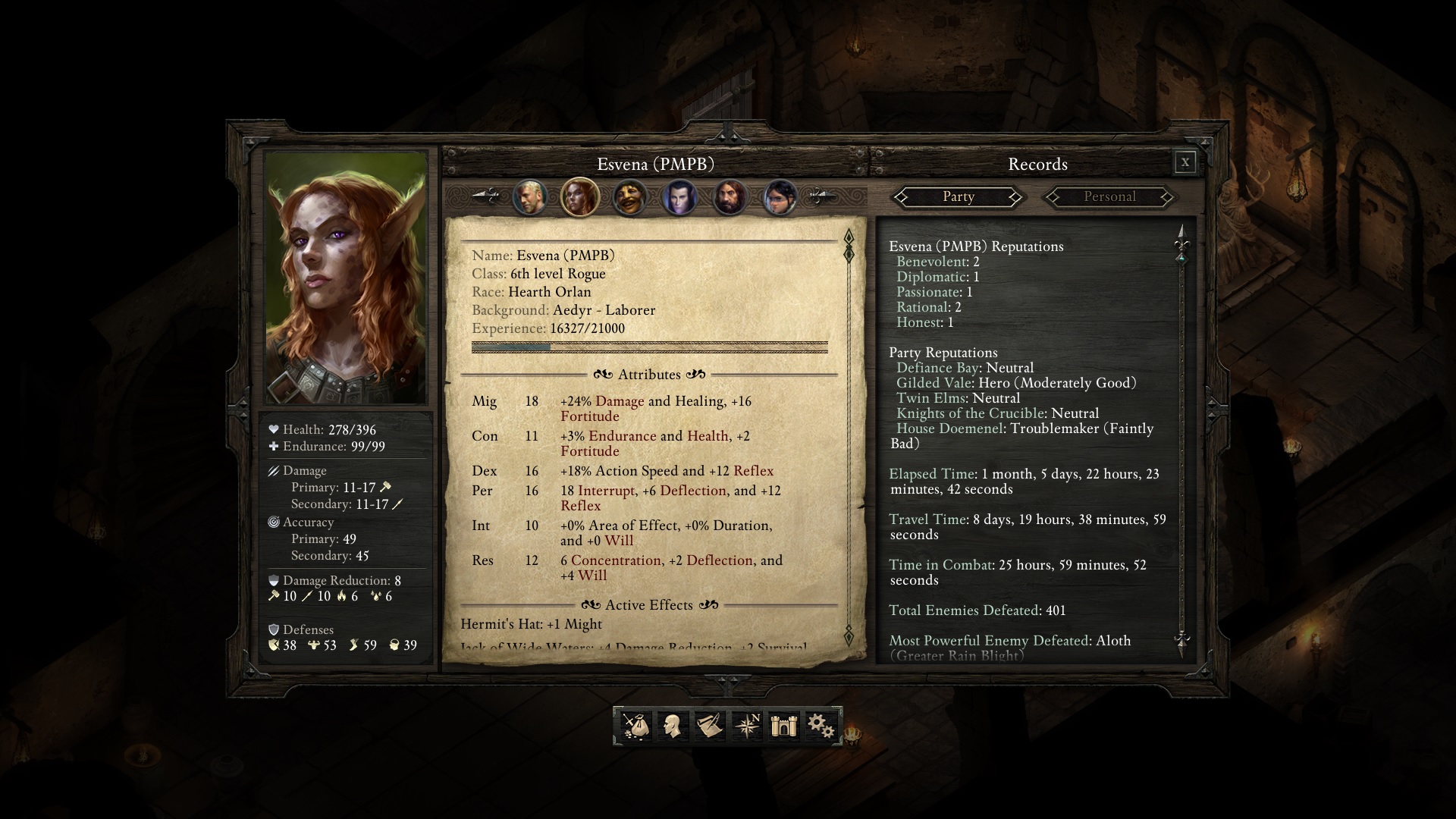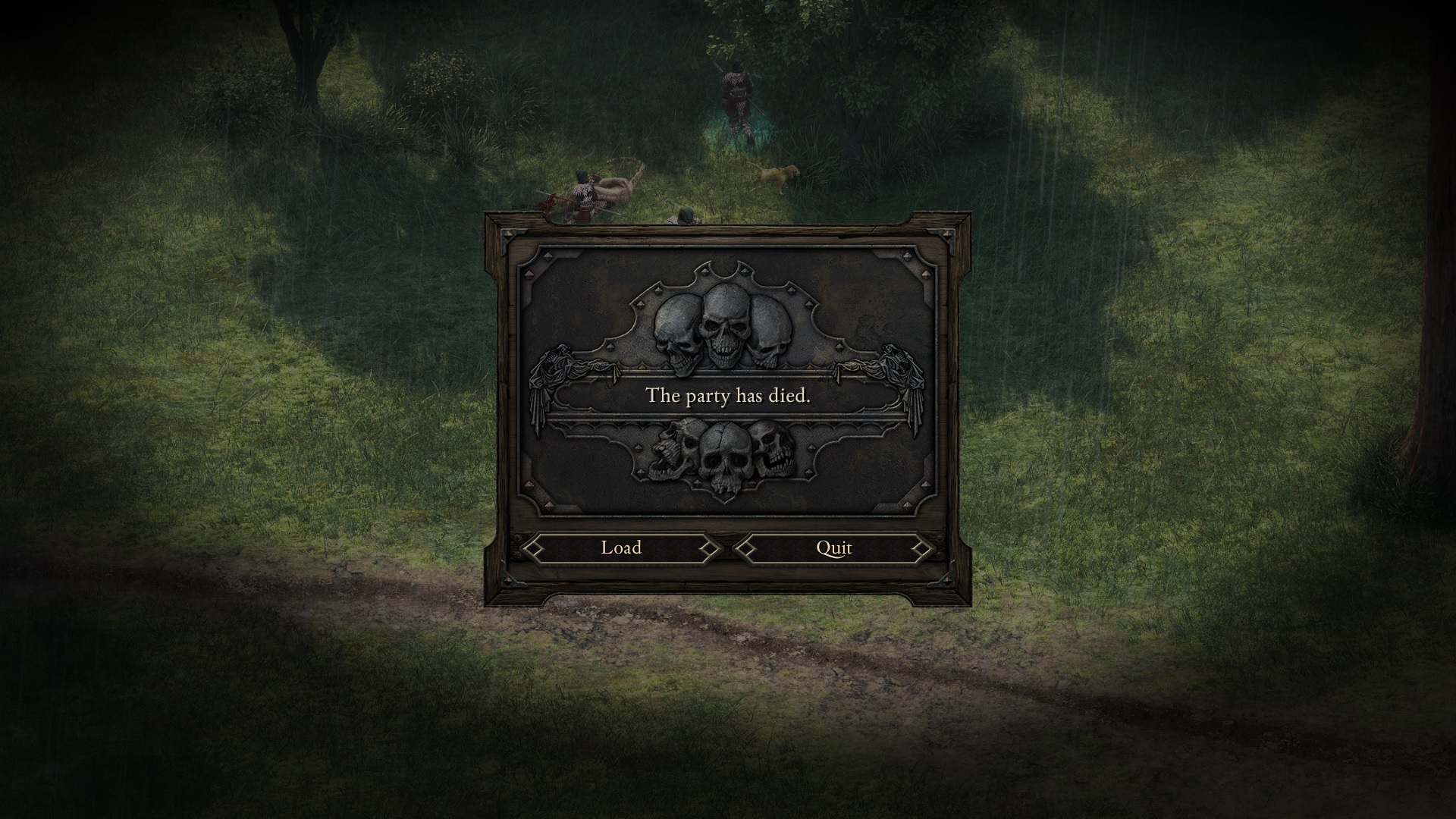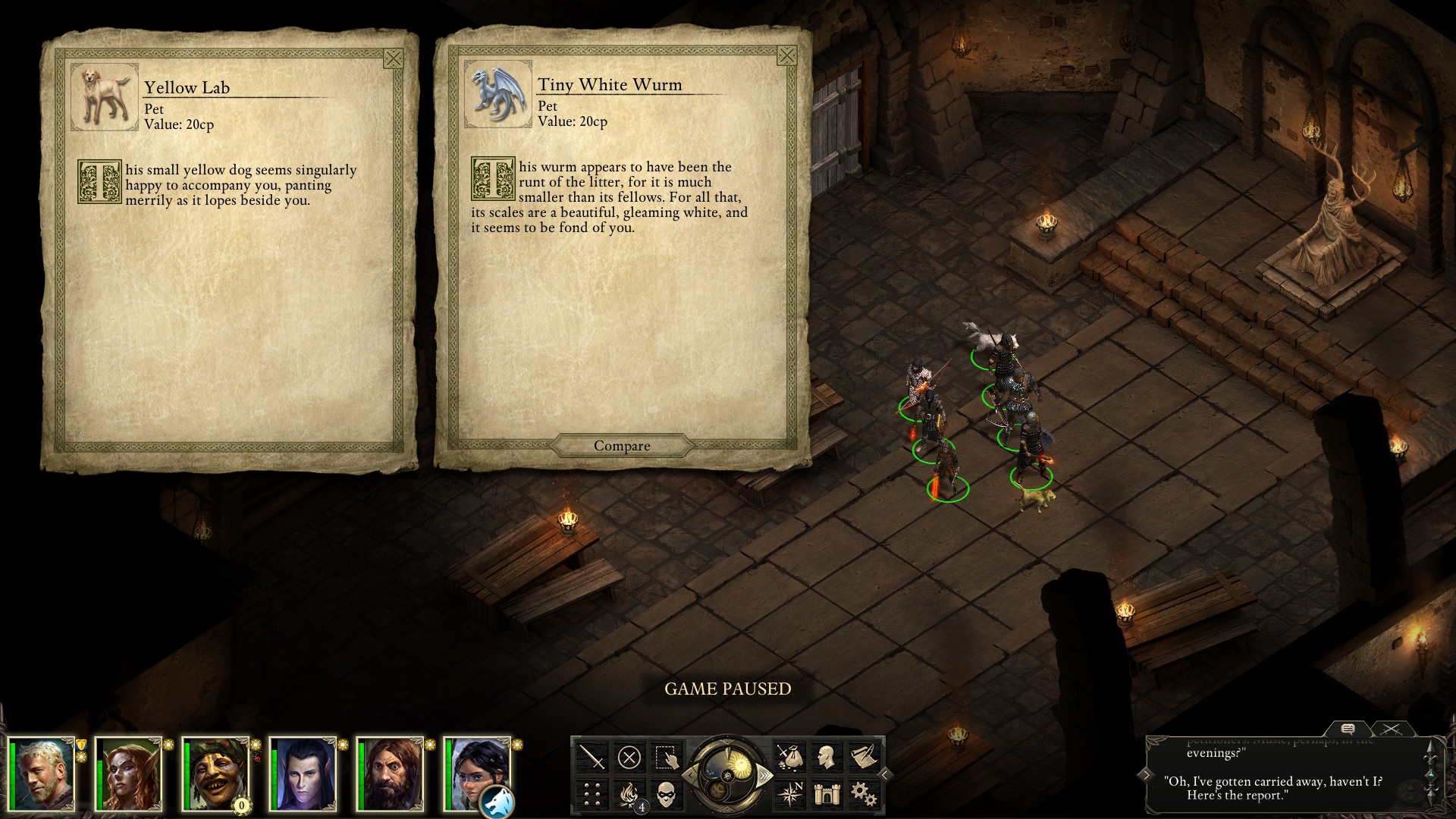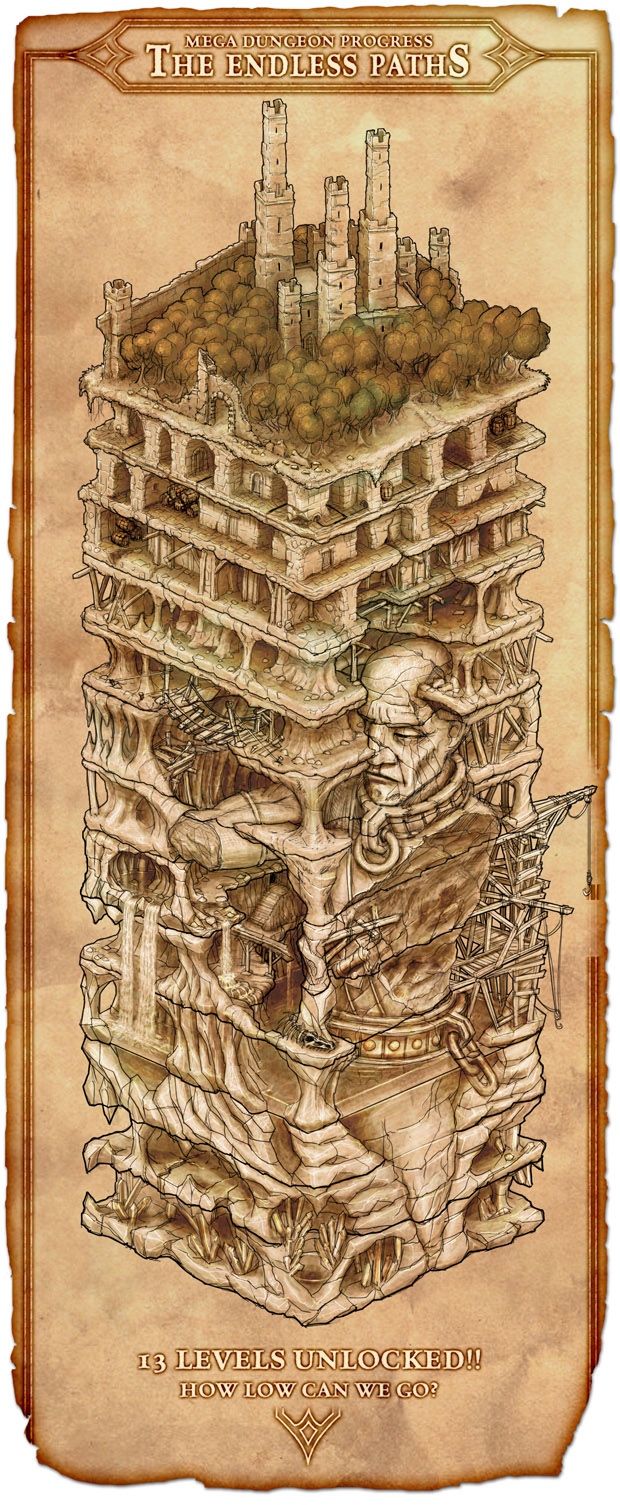It has been thirteen years since the last Infinity Engine powered game (Icewind Dale II) was released. It marked the end of an era when Dungeons & Dragons-based isometric RPG’s such as Baldur’s Gate II: Shadows of Amn and Planescape: Torment dominated the genre. A decade and a half later Baldur’s Gate II: Shadows of Amn remains one of the best, if not flat out THE BEST, RPG of all time. To this day, modern western RPG’s are still compared to Baldur’s Gate, and regardless of whether they admit it or not, every Western RPG developer since has been chasing that high water mark. When the genre shifted from isometric top-down adventures to first/third person ones a little spark was lost. We traded customization, control and depth for flashier visuals, a broader appeal and ease of use. As much as I have loved many RPG’s since the death of the Infinity Engine (Dragon Age: Origins, The Witcher 2 etc.), if you asked me today if I would have made that trade, the answer would be a resounding, emphatic NO. D&D style isometric RPG’s are embedded in my gamer DNA.
On paper, Pillars of Eternity sounded too good to be true. A top-down isometric RPG built using the wonderful Unity Engine, developed by Obsidian Entertainment, that was determined to bring everything fans loved about the Infinity Engine heyday into the present day, seemed like a dream that could not possibly be real. Nostalgia waged war with pessimism in my head. Even with the recent success of Wasteland 2 and Divinity: Original Sin, I was well aware that most Kickstarter funded games end up stillborn. Obsidian Entertainment themselves have earned a rep, not entirely undeserved but also not entirely their fault, for releasing buggy, troubled games (Dungeon Siege III, Alpha Protocol etc.) that are not always as great as they could have been. The review embargo for Pillars of Eternity also worried me. It’s rarely a good sign when reviews are forced to wait until release day.
Turns out I need not have worried. Pillars of Eternity is a triumph – easily a contender for Game of the Year. This game clicked with me in a way I have not felt in over a decade.
[youtube id=”HKoDTzea79Y”]
• Developer: Obsidian Entertainment
• Publisher: Paradox Interactive
• Reviewed on: PC
• Also Available On: PC, Mac, Linux
• Release Date: Available Now
Playing Pillars of Eternity for the first time is a bit overwhelming, even if you are familiar with the Infinity Engine games of old. The D&D DNA runs deep in PoE and even though everything “feels” familiar, the game is very much its own animal. Obsidian staff include the remnants of the much beloved Black Isle Studios, and members who have worked on the Baldur’s Gate series, Icewind Dale series, Fallout series, Arcanum, Planescape: Torment and Temple of Elemental Evil. As a result PoE feels like a master class in CRPG design. It’s not just an homage or a rehash of an old style; it’s an intelligent, modern take on a classic style with all the bells and whistles modern gamers expect. PoE may look like a D&D Infinity game, but it has its own expansive rule-set, its own lore and its own personality.
The world of Eora where PoE is set is a dark one. This is not a world of beauty and wonder but rather one of darkness and tragedy. Corpses are the decorations and screams are the soundtrack to this world. Adult themes like rape, child abuse/death, murder, torture, drugs, slavery and more are liberally spread throughout the game. The game does not lecture you on morality and social ills but it also does not shy away from them. The war between religion and science feels natural rather than a ham-fisted commentary on the real world. The humour is often dark and the language is definitely not the flighty High English of other RPG’s. Within the first 15 minutes of the game players are made aware that this is a world where death lurks around every corner. The intro to PoE brilliantly sets the tone for the rest of the game with a just a few quick fights, choice conversations and a small choose-your-own-adventure style illustrated text segment (which replace cinematics in PoE).
You start the game as just another traveller looking for a fresh start in a new land, flavoured by the choices you made during character creation. A LOT of terrible things happen and before long you are caught up in world where souls are endlessly reincarnated and the natural balance has been shattered. Some individuals can even see and manipulate souls. A lot of the strife, mystery and wonder in this game ties directly back to souls in some way, shape, or form. The game does not just explain everything in one big text vomit, but rather pulls you down a corridor full of madness and adventure with doors that are just as likely to lead to new questions as they are to provide answers.
Your attributes, talents and choices also ripple out into the greater world. It is not possible to be on everyone’s good side. Treat one group well and another group may become hostile to you for helping their enemies. NPC’s and main characters will react to your race, class, nationality and affiliations. Conversations are influenced by a number of factors, providing you with a number of different conversation options. All of which ties to a reputation system. This helps the world feel much more grey, with right and wrong being a matter of perspective.
The visuals are gorgeous if you have an appreciation for the style being used, even if the world could use a bit more colour in places. PoE does not have traditional cinematics. Instead players are given interactive text adventures with illustrations and sound effects that are directly informed by your stats and choices. These are not just throwing away pieces of fluff. Some of them have pretty big implications. When combined with all the books you can read and all the short stories that appear when you look into a person’s soul, PoE is as much a brilliant novel series as it is a video game. The writing is almost always exceptional. Far, far above the usual flavour text that wraps around typical binary conversations in other games. The text based dialogue and the voice acting are really great. You might not hear as much banter as you will in other games but what is there is entertaining and sometimes surprising. The 8 official companions all bring something unique to the table.
Character creation is one of my favourite parts of RPG’s. I’ll create a dozen different characters before I even begin to play the game proper. Attributes and talents and classes oh my! PoE is a wonderland in this respect. There are a lot of stats and mechanics to wrap your head around. You absolutely can build a viable character just following the on-screen tips and jumping into a game. If you know you want a Ranger you can build one that will serve you well just following the suggestions for a Ranger. The thing is, you won’t know WHY you are making those suggested choices. You’ll have descriptions to read sure, but you just won’t have an appreciation for the nuances of PoE‘s rule-set without experimentation. The game is setup in such a way that anyone can make a safe, viable character following the on-screen suggestions. Failure to Min/Max every damn stat won’t cripple you. Which is not to say you could not create a broken character, just that you’d have to travel pretty far off the beaten path to do it. By the same extent it is possible to break out “the maths” and attempt to make the most deadly backstabbing Orlan Rogue this side of Gilded Vale.
You have lots of choices when it comes to creating your character and they all come with some kind of stat. There are 6 races, 15 sub-races and 11 classes. Some of the races are fantasy stalwarts that have been given a PoE spin like Humans, Dwarves and Elves. Others are a bit more unique. The Orlan are similar to halflings in that they are small and make good rogues. The semi-aquatic Aumaua are PoE‘s answer to the hulking Orcs of other games. The most unique/bizarre of the options are the Godlike who were blessed/cursed at birth by the gods, leaving them with heads covered in various otherworldly features like horns or rings of fire.
The 11 classes are all unique, engaging and fun to play. You might think you know what you are in for just because you recognize the name but believe me, there are some pretty big departures from old school D&D logic in store for players. For example a Barbarian with max Intellect (mind = blown). Two of the standouts are Ciphers and Chanters. Unlike other casters, who have a fixed number of spells they can cast before they have to rest, Ciphers power their spells off Focus, which replenishes during combat. Having one of these psionicists in your party during a long slug fest is invaluable. Chanters are sort of like Bards are in other games; only in PoE they actually play a song passively, where each note is a spell/effect. You can design the song how you like with the spells available and it is even laid out on a template that looks like sheet music. What this means is your Chanter can run around and do any number of things, all while the song is playing and helping the party. Standouts aside, all the classes have some form of fresh take or outside the box thinking that makes playing them feel comfortable but still fresh.
Combat in PoE is almost always a white knuckle affair. Fights happens in real time but you can pause and issue commands. As a bonus, you can also slow down or speed up time at the press of a button, allowing you that extra time to react to subtle changes on the battlefield or cross a big map as quickly as possible. During combat you have to keep in mind both your Endurance and your Health. Endurance represents how much of a beating your character can take before being knocked unconscious. You can replenish Endurance with items, abilities and spells. While most damage affects Endurance you will also lose Health during combat. Lose all your health and you’ll be maimed. Get hit again and you are dead. Companions can die for good. You can’t replenish Health or remove maimed status without resting at either a camp or an inn.
Party composition, formation, location and more all have major effects on combat. You have to play smart, not just bold. Your party is incredibly powerful so long as you make your choices with care. Holding enemies at a choke point or pulling them into a killing field can be the difference between a tidy win and a complete party wipe. The enemies in PoE are super aggressive, varied and absolutely ruthless when it comes to hammering weakness. One of the ways PoE is different from other RPG’s is that the restrictions on equipment have been relaxed, meaning your casters can wear heavy armour and wield great swords if you want them too. There are considerations when it comes to armour of course, but it is nice that your casters and such don’t have to be so squishy.
PoE is not a game about grinding. Generally when you clear an area or map it stays cleared. You won’t be farming goblins or spiders because killing most enemies does not grant XP. Instead the game rewards players for exploration, discovery, completing quests and making choices. In fact, if you wanted to, you could stealth your way through the majority of the game, without killing, and there is even an achievement for doing so. Whether you plan on fighting or sneaking your way through you are always going to have to be on your toes. You can’t just roll over anything you encounter. Some enemies will be too tough to beat. Some areas will be inaccessible without the right gear. You’ll have way more active quests and tasks than you can immediately complete. This means you need to make hard choices and return to questlines and areas when you are better equipped to tackle them.
Besides the standard questing and combat (and a million other little things to be honest), PoE has two big features I love. The first of which is your Stronghold Caed Nua. Once you’re done battling through the Stronghold proper it becomes your base of operations. You’ll repair its buildings, shore up its defences, man it with soldiers, send companions out on quests and more from within its walls. You can even manage it while you are away. In some aspects it may seem a bit dry, but there is enough incentive there to keep making progress. Sometimes your Stronghold will come under attack. Other times you’ll take someone captive and hold them in your dungeons until somebody begs for their release. Even though the game has 8 official companions, you can recruit your own custom made adventurers any time you want as long as you have the cash. Since you can only have 5 companions in your party at a time, when your companions are not traveling with you they can be running quests from the Stronghold for a variety of rewards. It’s a great little meta element that provides a break from the immediate do or die nature of the rest of the game.
The other unique feature I love is The Endless Paths, which is a sprawling mega dungeon underneath your Stronghold. It’s almost like a game within a game. You’ll encounter all sorts of monsters, heroes and quests as you fight your way deeper and deeper. The whole time you are rebuilding the Stronghold in the back of your mind you worry about The Master Below.
A game this big and this deep comes with a significant bump in difficulty. Even if you are an old D&D warhorse playing on Normal will provide a serious challenge. You WILL die many, many times. Normal is so challenging in fact that I would not begrudge even seasoned Infinity Engine gamers who chose to start off playing on Easy. Hard mode is just that; HARD. I attempted to start playing this game from the jump on Hard and it was rough. Playing on Path of the Damned difficulty is pure masochism. Players can even take it a step further by turning on Expert Mode which completely removes all hints and suggestions from the game. If you are feeling truly crazy you can even try playing the game with Trials of Iron turned on which gives you just one save and one life. If you die, that’s it.
The game also comes with some more subtle touches that have a big effect on the game. For one, you’ll never run out of storage space when you are out questing. Each of your companions can hold 16 items in their inventory, but everyone always has access to your party Stash, which as far as I can tell is bottomless. The UI is clean, practical and easy to use. The game allows you to control font size and includes a colour-blind mode.
As far as bugs and glitches go I’ve encountered very few in my 37+ hours playing. The game never crashed on me once. I had to reload a save once to get a quest to trigger and I encountered text wrapping around improperly during a conversation with a random NPC. That’s it. I’m sure patches will come down the road that change balance and stats, but on a technical level PoE is one of the most stable new releases I have played in years.
Pillars of Eternity is the best game I’ve played so far this year. It may end up being one of the best video games I’ve played period. Obsidian promised fans the moon – and astonishingly, they have actually managed to keep that promise. I did not just play PoE, I LEARNED it. I became a student of the world of Eora, marvelling at its many wonders, undaunted by its horrors and propelled onward by its rewards. This is the kind of video game that reaffirms your love of the hobby we all share. You can tell Obsidian cared about this game. Everything from the cute little pets you can buy to the shower of gibs when you land a crit to the bawdy humour of an insane priest; you can “feel” the commitment, passion and fun that went into Pillars of Eternity. Bravo Obsidian. Bravo.
Now make Pillars of Eternity 2 please.
Tags: Infinity Engine, isometric, kickstarter, Linux, Microsoft Windows, Obsidian Entertainment, OS X, Paradox Interactive, PC, Pillars of Eternity, PoE, Role Playing, RPG, Unity Engine

